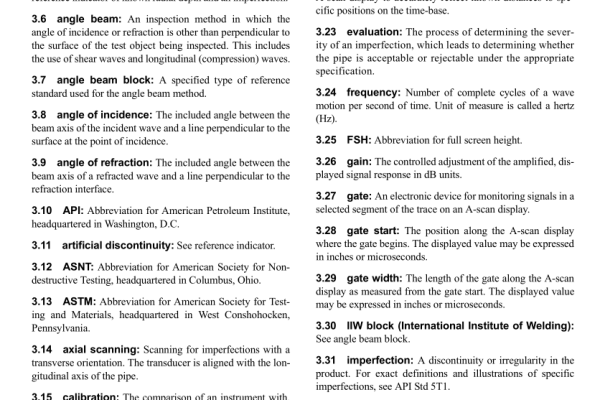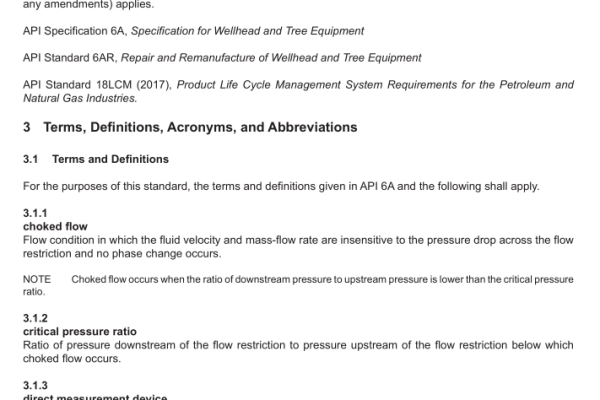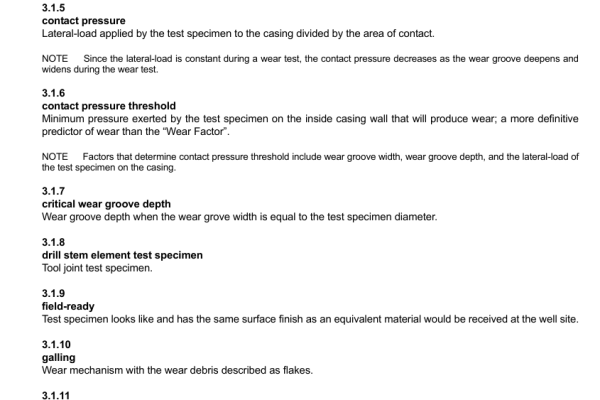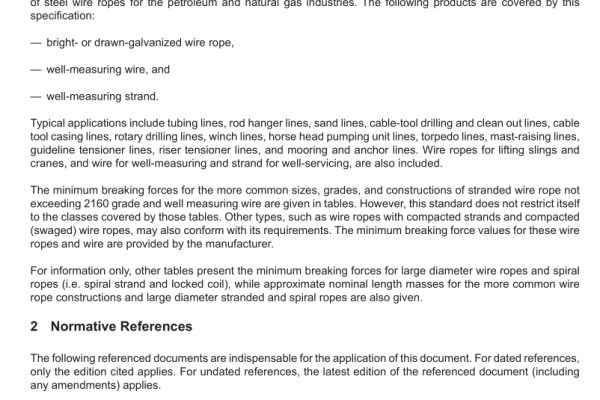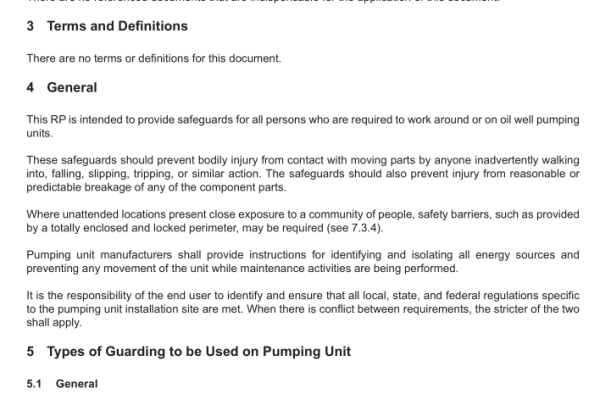API 6AV2-2020 pdf download Installation, Maintenance, and Repair of Safety Valves (SSV, USV, and BSDV)
7.3.2 Testing
7.3.2.1 General
Required tests for the safety valves following installation and/or feld repairs are stated below. The actual test procedure performed depends on the extent of repair and, as specifed below, may be limited to a reduced number of steps.
7.3.2.2 Actuator Seal
For feld repairs afecting actuator seals, the safety valve actuator shall be, at a minimum, tested for leakage using the safety valve actuator media. Test pressure shall be the normal feld operating supply pressure up to a maximum of 5 % over normal feld operating supply pressure. Duration of the test shall be 15 minutes minimum.
The acceptance criterion is no leakage.
7.3.2.3 Valve Bore Sealing Mechanism Alignment
For feld repairs afecting the alignment of the gate and seats with the conduit bore, alignment shall be verifed,at a minimum, with a drift mandrel, unless it can be verifed through other means.
7.3.2.4 Pressure-containing Parts
For feld repairs that require breaking or disturbing a pressure-containing seal in the safety valve, the safety valve pressure-containing seals shall be tested for leakage with the safety valve in a fully or partially open position and with the valve body exposed to maximum wellhead SITP. The test duration shall be a minimum of 5 minutes.
The acceptance criterion shall be no leakage.
7.3.2.5 Pressure-controlling parts
For feld repairs afecting valve pressure-controlling and containing operation of the safety valve assembly,perform testing per 7.3.3 and incorporate 7.3.2.4.
7.3.3 Test Procedure
Testing requirements shall include the following steps:
a) Shut in well.
NOTE System capabilities may be used to minimize pressure diferential across the safety valve during the opening or closing of the valve.
b) Close the safety valve.
c) Open the safety valve.
d) Repeat steps b) and c) two additional times.
e) Close the safety valve.
f) Ensure wing and fowline valves are positioned to allow pressure to bleed of downstream of the safety valve.
g) Verify system stability per 7.1 b).
h) If an indirect measurement method such as pressure buildup is used, close valves downstream of the safety valve to create the test cavity, and immediately begin the pressure-monitoring period. The pressure- monitoring period, test cavity volume, pressure change, temperature change, and sensitivity of pressure- measuring devices shall be sufcient to demonstrate compliance with the acceptance criteria.
NOTE Annex A contains an example of and guidelines for a specifc pressure buildup method of indirect leakage measurement. Other indirect measurement methodologies may be used if these methods have the accuracy needed to discern compliance with acceptance criteria.
API 6AV2-2020 pdf download

